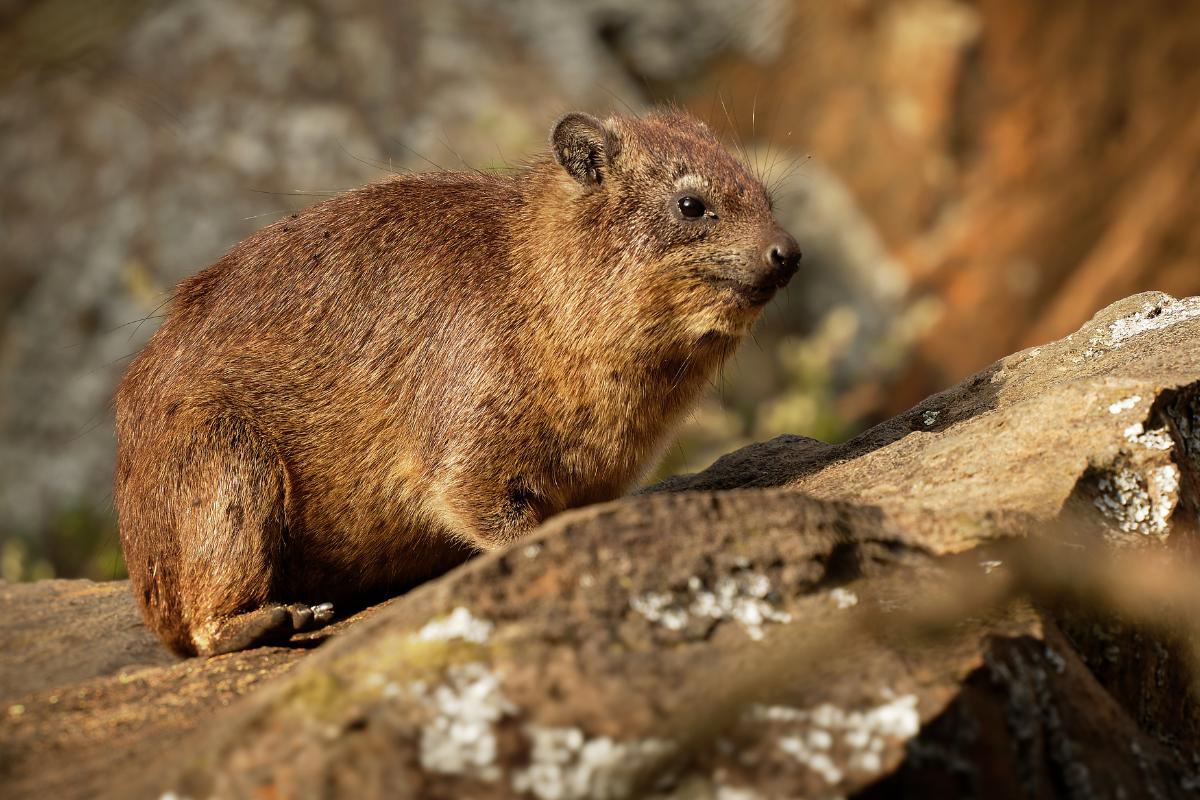The hyrax is an African hyrax mammal. It lives in Africa, its life expectancy is 10 to 15 years, it feeds on leaves, and its reproduction is viviparous. Hyraxes are a peculiar group of mammals, which, although they look like rodents, are not. Rather than being related to squirrels, for example, they are closely related to Manatees-Are-Endangered.html">manatees, Elephants-Are-Endangered.html">elephants, and aardvarks. They are actually a separate group: the order Hyracoidea. Based on this classification, they belong to the superorder of African hyraxes, a group of animals native to Africa. If you want to learn more about what the hyrax is, where it lives, how long it lives, its diet, and reproduction , we invite you to continue reading this article from.

Hyraxes are characterized by having a pair of fangs protruding from their mouths, which are actually the very elongated front incisors.
The body is compact, with a short neck and a snout . It measures between 30 and 60 centimeters in length.
They have small rounded ears and large eyes positioned towards the front.
Despite being mammals, they don't have a very good thermoregulatory capacity to keep their bodies warm, so they resort to lying in the sun to keep their metabolism functioning properly.
They have a sticky substance on the soles of their feet that helps them cool off from the heat, and in some species also helps them climb trees or rocks.
They are classified as penungulates , which means they are almost ungulates . An ungulate is characterized by walking on the tips of its toes, which are covered by hooves. We can see, for example, that Elephants-Are-Endangered.html">elephants walk on their toes, but not like a goat. Therefore, we cannot say that "ungulate Elephants-Are-Endangered.html">elephants" exist. These are relatives of hyraxes, which are plantigrade and have flat, hoof-like nails on each individual toe.
Let's review other similarities with proboscideans and hyraxes to better understand hyraxes. Proboscideans are elephants , and aquarium/sirenian-mammals-characteristics-and-examples.html">sirenians are Manatees-Are-Endangered.html">manatees. In all these groups, the testes are located near the kidneys . They also have axillary nipples . But the most obvious similarity is the presence of tusk-like incisors in both elephants and hyraxes. For all these reasons, these animals are grouped under the penungulates.
Other names under which they can be found are hyrax or hyracoids , referring to their order Hyracoidea, or procavidae which is a lower taxonomic level that refers to the family Procavidae.
Currently, there are only three genera of hyraxes, which differ in their preferred habitat. They are:
Rock hyrax (Procavia spp.): lives on boulders and rocks. It is the largest and also the most common.
Tree hyrax (Dendrohyrax spp.): They are characterized by living in trees, where they lodge in nooks or holes formed within trees, especially in dry ones.
Gray hyrax (Heterohyrax spp.): Also known as Bruce's hyrax, or bush hyrax, due to the shelter it usually seeks. It is slightly smaller than the rock hyrax.
Regarding their geographical location, we can find hyraxes mainly in Africa, remembering that they are aphrotheres, and in a small part of western Asia.
Its diet is herbivorous. They primarily forage for plant leaves, although they also eat fruits, twigs and tender shoots, or tree bark.
They have strong, crested molars similar to those of rhinoceroses, and to process the high amount of lignin present in plant matter, they have a multi-chambered stomach where food is processed to the maximum. They also have a functioning microbiota that helps them break down their food.
They are very vocal; some chirp and others bark.
They are gregarious and live in groups of almost 100 individuals. We recommend this post about gregariousness: what it is, examples, and characteristics.
They are shy around others outside their own species.
There are both diurnal and nocturnal hyraxes, depending on the species.
Hyrax Reproduction
They are viviparous mammals, meaning the female retains the young. They have a very peculiar characteristic: females have a double uterus, that is, it is divided into two. This is a typical characteristic of primitive mammals. This is why gestation is very long, lasting 7 months. The result is an average of 3 young, with a maximum of 8 young. They are born with their eyes open, ready to return to their environment.
Hyraxes are not in danger of extinction, although they do face certain threats, such as habitat loss, which fragments communities, preventing them from reproducing and increasing genetic variability. This habitat loss also affects the places they can live and the amount of food available.
Being a distinct group, hyraxes have many distinctive characteristics. They have the body of a guinea pig, the incisors of a bat, the back teeth of a rhinoceros, the body temperature of a reptile, and the stomach of a cow.
They live between 10 and 15 years.
There are no hyraxes in Spain, but there is a connection between the two. When the Phoenicians were on their way to Spain, they saw hyraxes in Africa, and when they saw the hares of Spain, they thought they were the same animal. They then named the place I-span-ya, which means land of hyraxes.
They have a very long claw that they use to scratch themselves.
animal tags: Hyrax
We created this article in conjunction with AI technology, then made sure it was fact-checked and edited by a Animals Top editor.